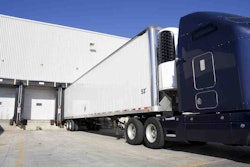
Select fleets that have adopted fuel efficiency technologies saved more than $636 million at the fuel island in 2017 when compared to the average tractor, according to a study conducted by the North American Council for Freight Efficiency (NACFE).
The study, which looked at the fuel savings strategies deployed by 20 fleets nationwide, found these carriers achieved 7.28 miles per gallon last year across a combined 71,844 tractors and 236,292 trailers. The 2017 mark represents a 2 percent gain over 2016 and 7.28 mpg is more than a full mpg higher than the U.S. fleet average of 5.91.
However, 2017’s mpg is far from NACFE’s high-water mark, falling well short of the 10 mpg a select group of drivers achieved during last year’s Run on Less campaign.
NAFCE’s annual fuel study tracks the adoption of about 85 products on the truck and trailer deployed on Class 8 trucks – both daycab and sleeper configurations – and in regional and long-haul segments. The 2017 study reflects the first year participants operated Phase 2 Greenhouse Gas 2017-compliant engines.
Among the most popular strategies last year were cab extenders (90 percent adoption rate); a transition to lower viscosity oil (87 percent); shifting to neutral (57 percent) and the adoption of a direct drive transmission (53 percent). In-cab cameras fell just short of the majority with a 49 percent adoption rate.
NACFE Executive Director Mike Roeth says the use of trailer trails ticked back upward in 2017 after leveling off the year before. He says that is thanks in part to the introduction of newer tail devices that mount to the top and sides of the unit.
The biggest gainer of the group was the use of trailer-mounted solar panels, which jumped 1,117 percent from 2016. Used mostly in conjunction with telematics units, solar panels barely cracked the list in 2016 but were being deployed on 9 percent of the trailers surveyed in 2017.
The use of speed limiters that keep a truck below 65 mph fell 9 percent but were still in-use across 84 percent of the fleets surveyed. However Roeth says he’s doubtful the actual use of limiters themselves has declined. He says, most likely, fleets are speeding their trucks up and simply falling outside the 65 mph threshold used in the survey.
“Many fleets and truckers have been driving faster in recent years,” he says. “Several fleets increased the speed on cruise or on pedal during 2017 and others informed us they did so in 2018.”
Roeth says his group has seen more fleets allow a higher cruising speed, which he says “is a good thing for fuel economy.”
Among the fleets providing data for the survey were Bison Transport, CR England, Cardinal Logistics, Challenger Motor Freight, Crete Carriers, Frito-Lay, Hirschbach, Maverick Transportation, Mesilla Valley Transportation, NFI Industries, Nussbaum, Paper Transport, Prime, Ryder, Schneider National, United Parcel Service, Werner, U.S. Express and XPO Logistics.












